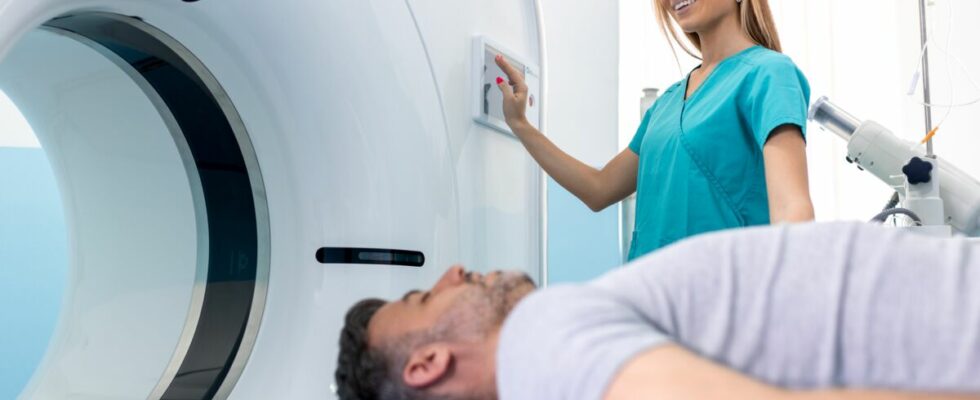Whether the pain concerns the pelvic area (rectum, bladder, uterus, prostate) or abdominal area, its persistence must be the subject of medical treatment. An abdominal-pelvic scan can be performed with or without injection of contrast material. It makes it possible to detect abnormalities such as an infection, stones, tumor, inflammation. Find out what the abdominopelvic scan is, in what cases it is prescribed and how it is carried out.
What is an abdominopelvic scan?
An abdominal-pelvic scanner is a medical imaging examination which, thanks to the X-rays it uses, allows you to see precisely the structure of the organs located in the abdomen and in the pelvic cavity. It thus makes it possible to collect precise images of the liver, intestines, spleen, kidneys, but also of the rectum, prostate, uterus and bladder.
What are the indications for an abdominopelvic scan?
There are several indications for an abdominopelvic scan, informs the Montpellier University Hospital Center. In fact, your doctor may decide to prescribe it to you because:
- Often unexplained abdominal-pelvic pain. This is to help with diagnosis. This abdominal-pelvic scan can thus highlight stones (bladder or kidney), a tumor (benign or malignant, such as cancer of the pancreas, liver, kidneys, bladder, prostate, ovaries, etc.), specifies the Center for Medical Imaging in central Paris. It also makes it possible to detect infection (pyelonephritis, appendicitis, abscess) and inflammatory diseases (Crohn’s disease, liver cirrhosis, etc.).
- Control: it may be required to monitor the progress of a disease such as cancer or to ensure the effectiveness of a treatment.
- Urgent surgical intervention or not: to plan an intervention.
- Necessary guidance: during surgical intervention (biopsy, abscess drainage, etc.).
How is an abdominopelvic scan performed?
There are things you should know before having your abdominopelvic scan:
- Before the examination: a blood test is generally taken to check that there are no contraindications to the abdominal-pelvic scan, especially if it is carried out with an injection of contrast product (check the absence renal failure). You must fast for 4 hours before the exam, get rid of any metal objects you have worn and put on a gown. Finally, this exam should be avoided for women who are 3 months or less pregnant.
- During the examination: you lie on your back on a tray, which will slide in a ring. You are alone in the room and connected to the radiologist by a microphone. Your arms are alongside your body or behind your head depending on the specific area to be analyzed. If it is a CT scan with injection of contrast product, the product is injected into the crease of the elbow intravenously. It is a completely painless exam, which requires you to remain perfectly still to obtain clear images. It lasts approximately 15 minutes.
Sources
- Abdominopelvic and/or thoracic scan with injection of contrast product, Montpellier University Hospital
- Abdominopelvic scanner, Medical imaging Paris center
- Abdominal or pelvic scan C+, Montreal Heart Institute affiliated with the University of Montreal
Read also :
⋙ Magnetic resonance imaging (MRI): definition, usefulness and procedure
⋙ Scintigraphy: definition, procedure, dangerousness and difference with an MRI
⋙ Radiography: what does this medical imaging exam consist of?
